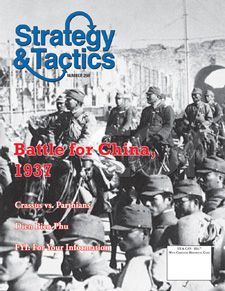Battle for China, 1937-1941 (Second Edition) (2009) Board Game
The Battle for China, 1937-1941 (Second Edition) board game is set during the early stages of World War II, focusing on the conflict between China and Japan. This period marked a crucial time in the global conflict, with Japan seeking to expand its influence in Asia through military conquest. The game allows players to recreate and strategize key battles and events from this tumultuous time in history.
Game Components of Battle for China, 1937-1941
How To Setup Battle for China, 1937-1941
Setup involves distributing the faction-specific components, placing the map, and shuffling the event and propaganda cards. Each faction has unique starting conditions and objectives. The game includes a solitaire system, allowing for single-player setup, as well as configurations for 2-4 players.
Gameplay Mechanics and Game Objective
– Japanese: To occupy key areas and maintain control.
– Nationalists: To resist Japanese occupation and secure foreign aid.
– Chinese Communist Party: To expand influence and control.
– Warlords: To maintain power and influence.
– Area Movement
– Card-Driven Events
– Resource Management
– Political and Military Actions
Player Experience
Players experience a complex and dynamic game environment where each faction has asymmetric capabilities and objectives. The game requires strategic planning, resource management, and adaptation to events driven by the card deck. The historical context adds depth, with the game simulating the real-world challenges faced during the Second Sino-Japanese War.
Pros
Cons
Personal Thoughts on Battle for China, 1937-1941
“Battle for China, 1937-1941” is ideal for experienced board game enthusiasts, particularly those interested in historical war games and complex strategy. It is not a game for casual players due to its complexity and length. However, for those who enjoy deep strategic gameplay and historical simulation, this game offers a rich and immersive experience.
We are supported by our audience. When you purchase through links on our site, we may earn an affiliate commission, at no extra cost for you. Learn more.

